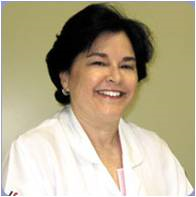|
How to submit an article to JBPML
1. Enter the site www.scielo.br/revistas/jbpml/www.jbpml.org.br.
2. If you have already registered, type your login and password and click on "Enter SGP".
If you have not registered yet, click on "I want to register".
3. First step: in the field "Inform your e-mail" register the e-mail that will be used to receive news and information about SGP.
Click on "Continue registration".
4. Second step: fill in the registration fields.
Note: The fields with an asterisk are obligatory.
Click on "Continue registration".
The message "Your registration at SGP has been successfully concluded" will appear.
You will receive an e-mail with your login and password at your registered e-mail address.
Click on "Back" at the same page.
5. You will return to the initial page of SGP with login and password.
On this page enter your login and registered password and click on "Enter SGP".
Note: your login and password are in the e-mail SGP sent to you by the end of your registration.
6. On the initial page of SGP there is a message informing you this is the first time you access the system. Otherwise, the message will inform you how many times you accessed the system, date, time of your last access and if you have access with author status.
7. Observe the menu on the left side of the screen. If you have not submitted any articles to SGP, all the items of the menu will be indicated with a "Zero".
8. To submit an article, click on "Submit new article to Jornal Brasileiro de Patologia e Medicina Laboratorial".
9. Window "Step 1": inform the classification of your article (manuscript):
-
Review article
-
Original article
-
Letter to the editor
-
Brief communication
-
Case report
Click on the option corresponding to your article classification. For example: Original article.
10. Window "Step 2": include the images and/or graphs used in the article. All images and/or graphs must be in one of the following formats: jpg, gif, png, pdf or tif.
After including images/graphs, click on "Send images". If the article has no images, click on "I do not need to send images".
11. In this window the author can check the images he sent and send more of them. If he had not sent any images, the message "No image has been sent" will appear.
Click on "Next".
12. Window "Step 3": insert/edit/exclude new co-authors. For each new co-author, the fields "Name", "Title, "Position" and optionally "ID card" (for subsequent Copyright Statement) must be filled in.
The order of importance of authors may be changed by clicking on the yellow arrows (up and down). The first name will be regarded as the main author and the others as co-authors.
After insert/edit/exclude new co-authors, click on "Record" and "Next".
If there are no new co-authors, click on "Next".
13. Window "Step 4": fill it in with the title of the article and key words. These pieces of information must be written in the author's mother-tongue (for example: Portuguese or Spanish) and in English.
Click on "Next".
14. Window "Step 5": fill it in with the abstract. The author may also include further information such as the institution, name and mailing address, and if he has received any financial support grants.
It is also possible to write a Letter to the Editor containing relevant additional information. Only the Editor will have access to it.
Click on "Next".
15. Window "Step 6": write the article itself. A text editor is provided with the necessary commands to formatting.
It is possible to paste a text that had already been written and formatted in MS Word.
Click on "Next".
16. Window "Step 7": Copyright Transfer Statement. Fill in the required fields, print it and send it to SBPC/ML by fax (21) 2205-3386.
17. Window "Step 8": visual format of the article (html or pdf). In this window the author decides if he will submit the article or exclude it and give up on submitting it.
18. Window "Concluded": it shows you have finished the article submission process.
19. You will receive an e-mail stating your article has been submitted to evaluation.
There is no fee for submission and review articles.
|











